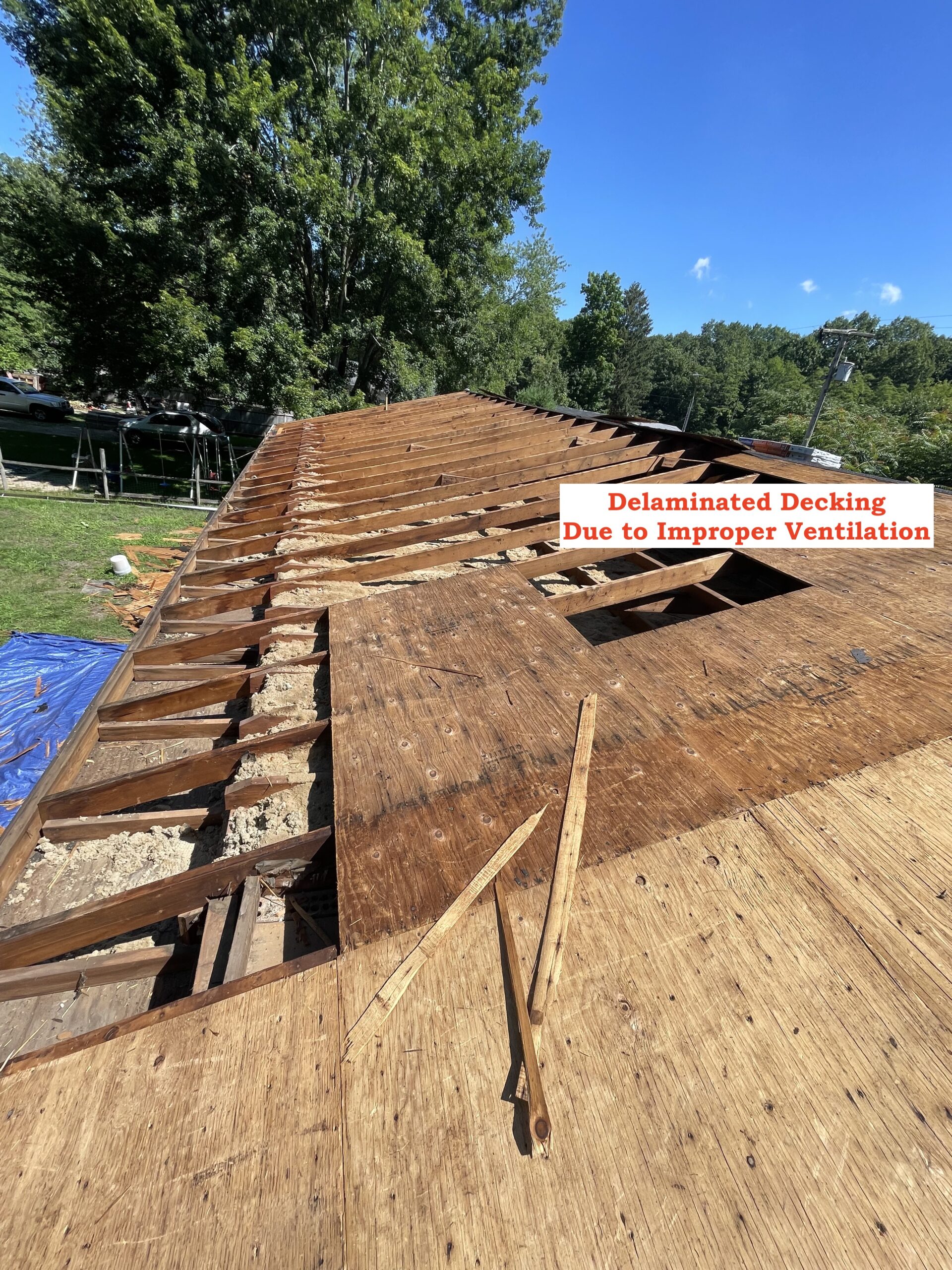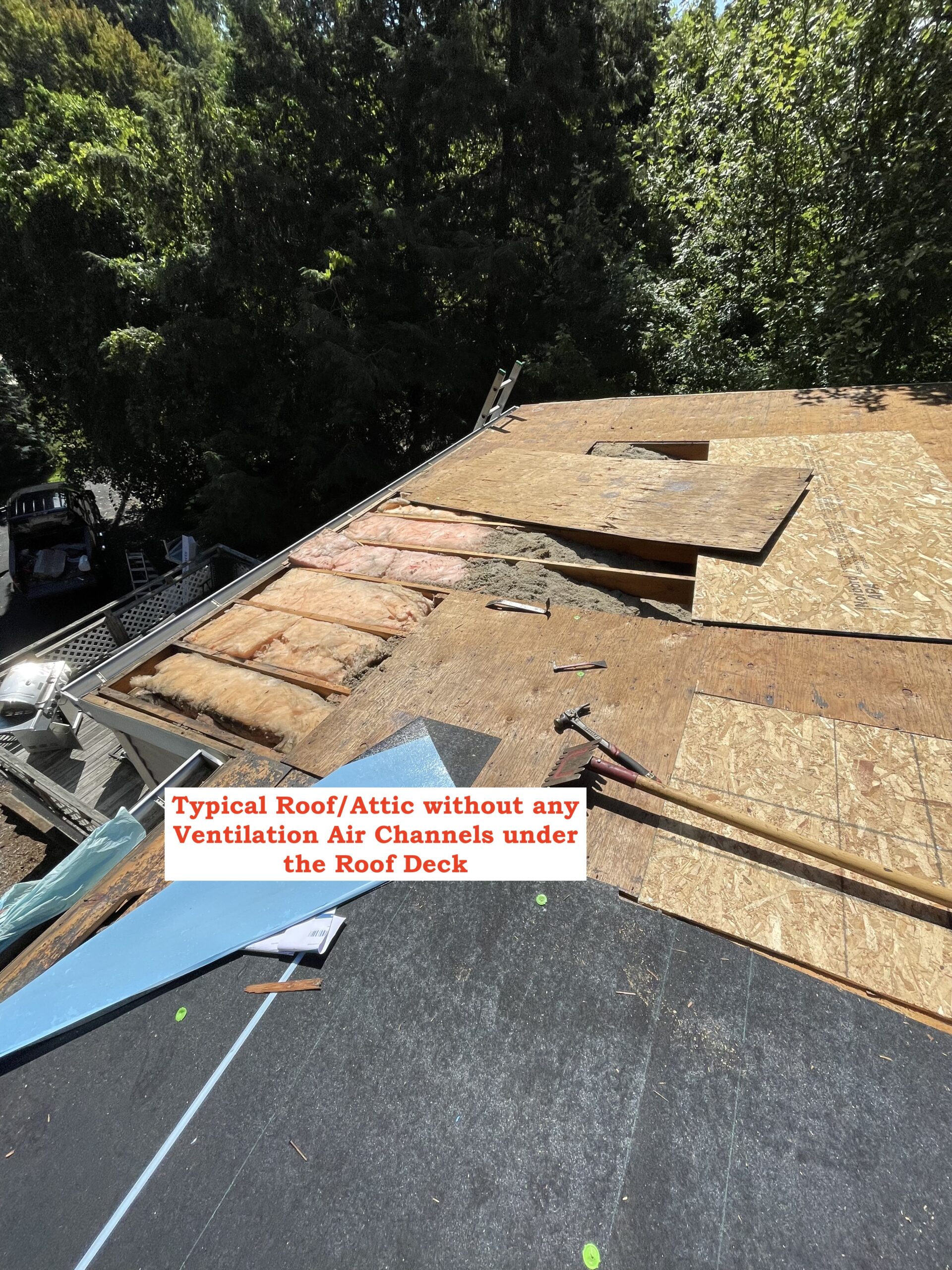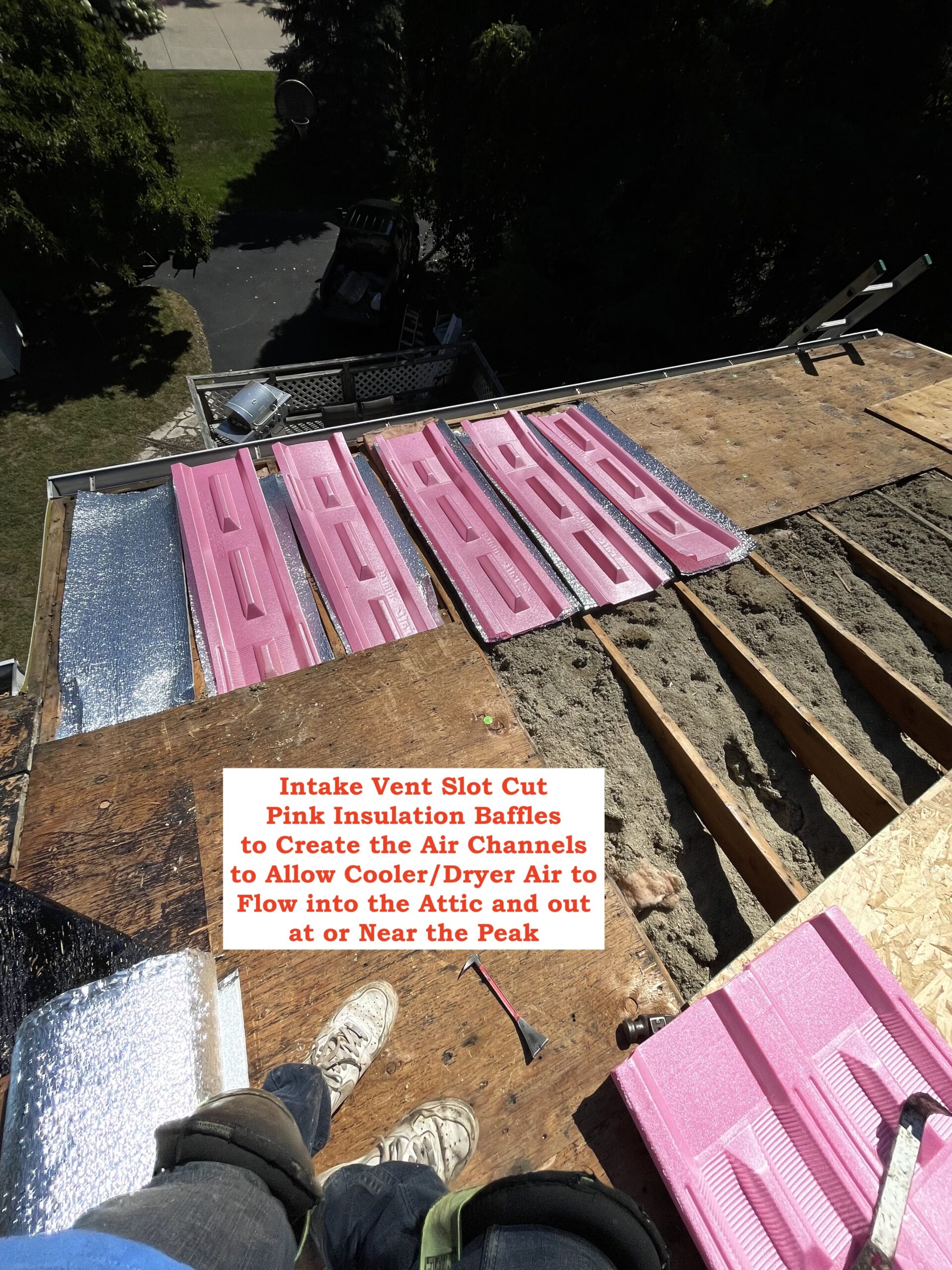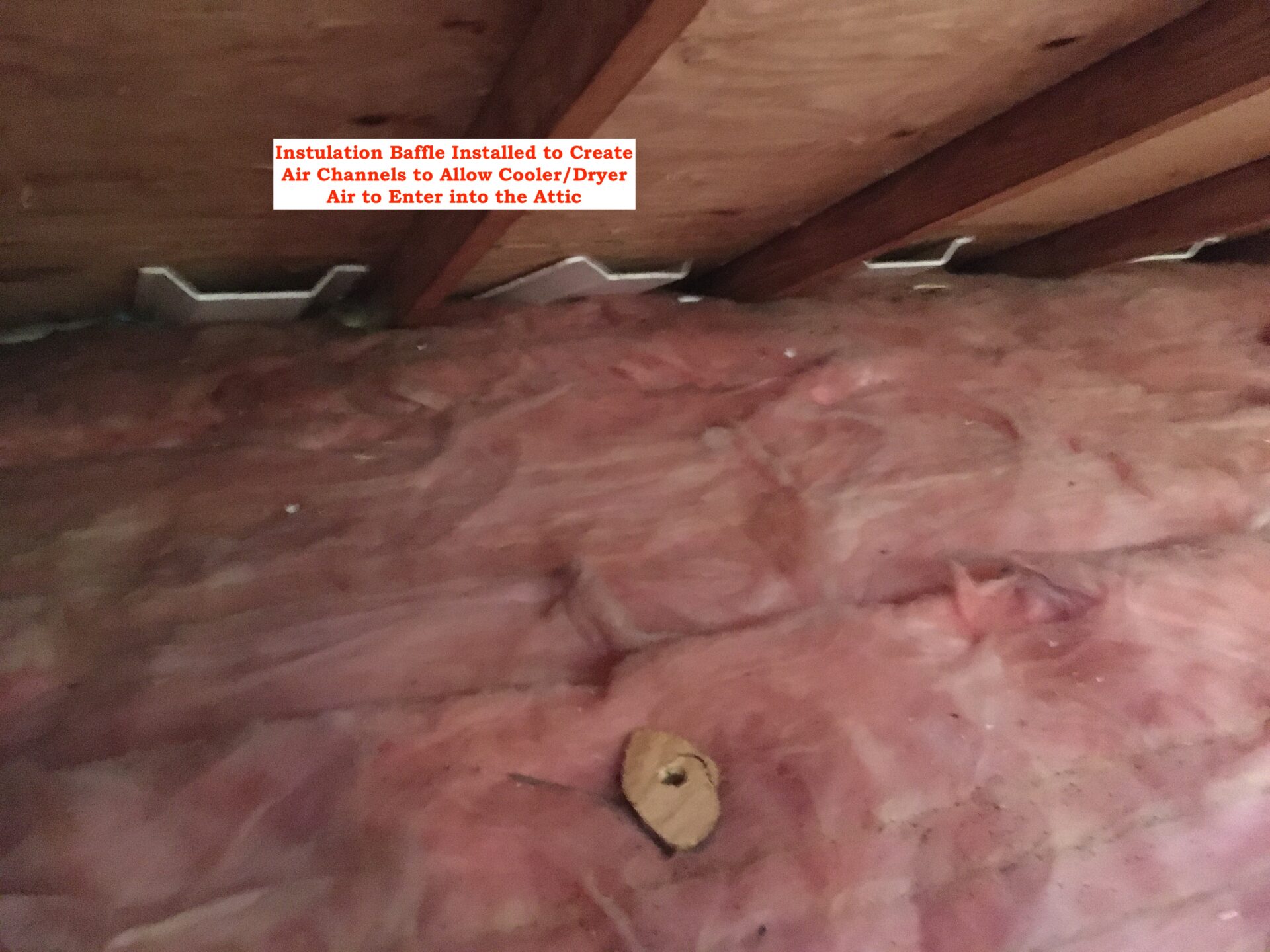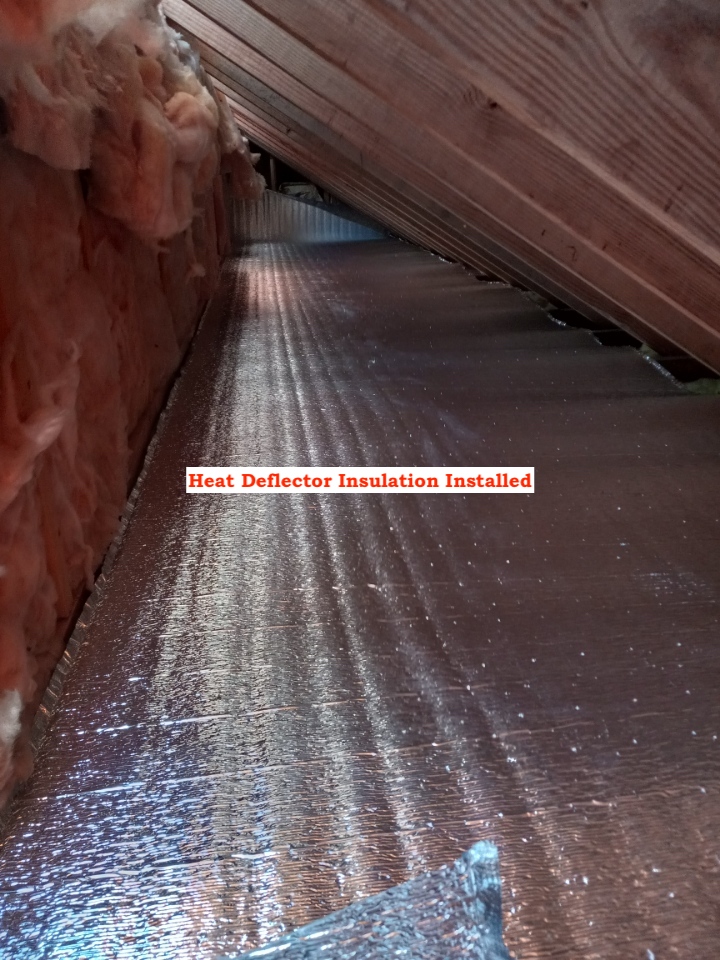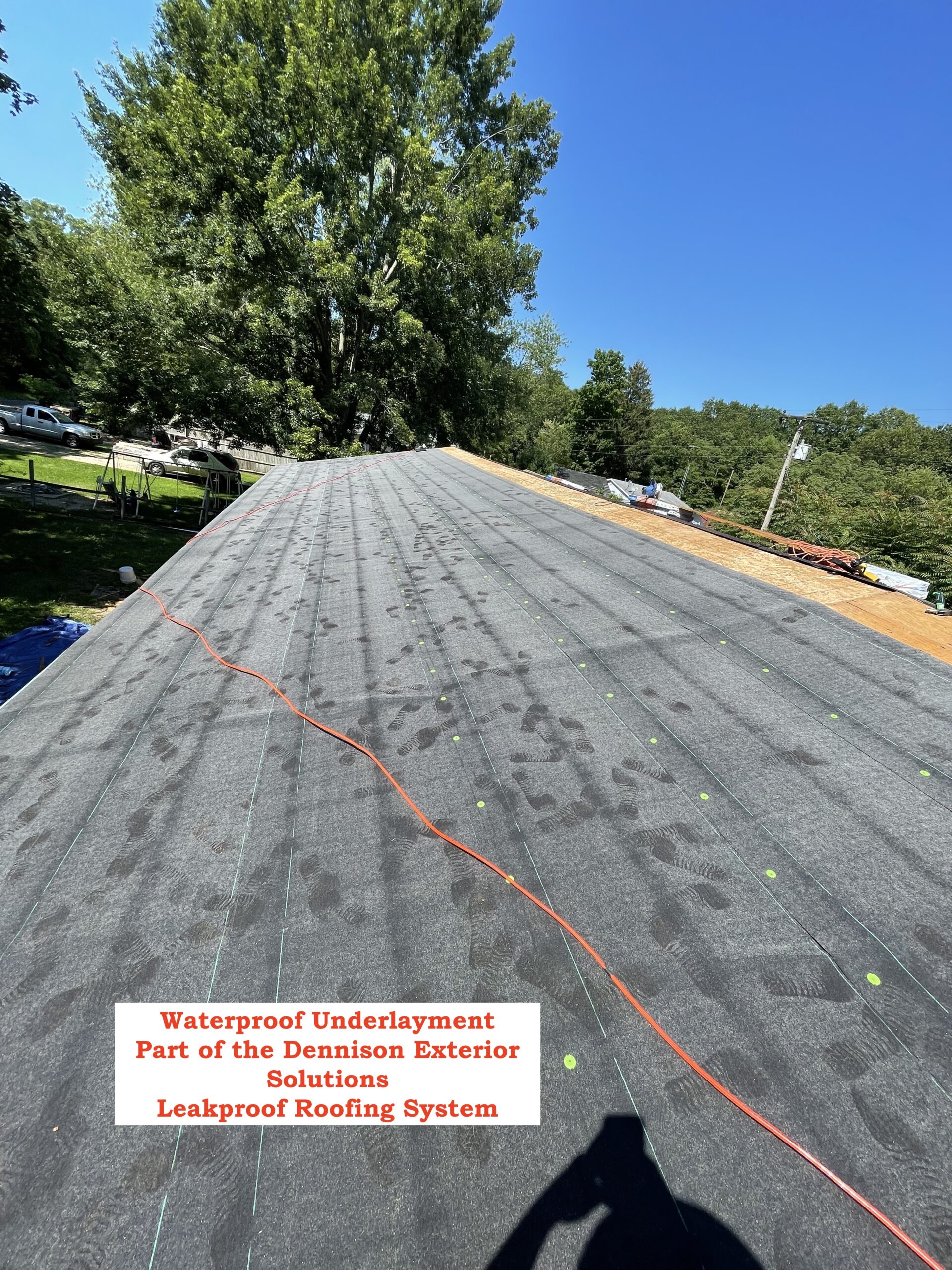Dennison Exterior Solutions & Gutter Topper we understand that the roof deck performance can have a strong effect on shingle performance. A bad deck can be a real headache.
The roof deck is the structural surface over which the roofing materials are applied. The roof deck should be a stable, smooth, solid surface which will permit the shingles to be securely fastened. The deck must be strong enough to: Support the roofing materials and workers. Safely resist impact loads, such as a pile of shingles. Hold uniform loads, such as heavy snow. Provide resistance to wind force. Anchor the nails. All five of these capabilities must remain effective during the service life of each application of shingles that may be installed on the deck now and in the future.
THE SHINGLE MANUFACTURER’S WARRANTY
If you apply a shingle roof over a deck surface that is unacceptable to the shingle manufacturer and damage results, the warranty might not be honored. The manufacturer will not take the responsibility for:
- Poor deck design that contributes to damage to the roofing system or other parts of the house.
- Defects or damage caused by materials used as a roofing base, over which the roofing shingles are applied.
- Damage to the shingles caused by settlement, distortion, failure, or cracking of the roof deck.
- Defects, damage or failure of shingles caused by applications that are not in strict adherence with the written instructions of the manufacturer.
- Application over wood that is not dry or which has hard projections, such as partially driven nails, which can cause damage to the shingles or underlayment applied above.
Non-Veneer Oriented-Strand Board (OSB)
The OSB panels must be at least 7/16″ thick and supported by rafters spaced 16″ to 24″ on center. The non-veneer OSB panels should be installed with a 1/8″ spacing between them to allow for expansion and contraction.
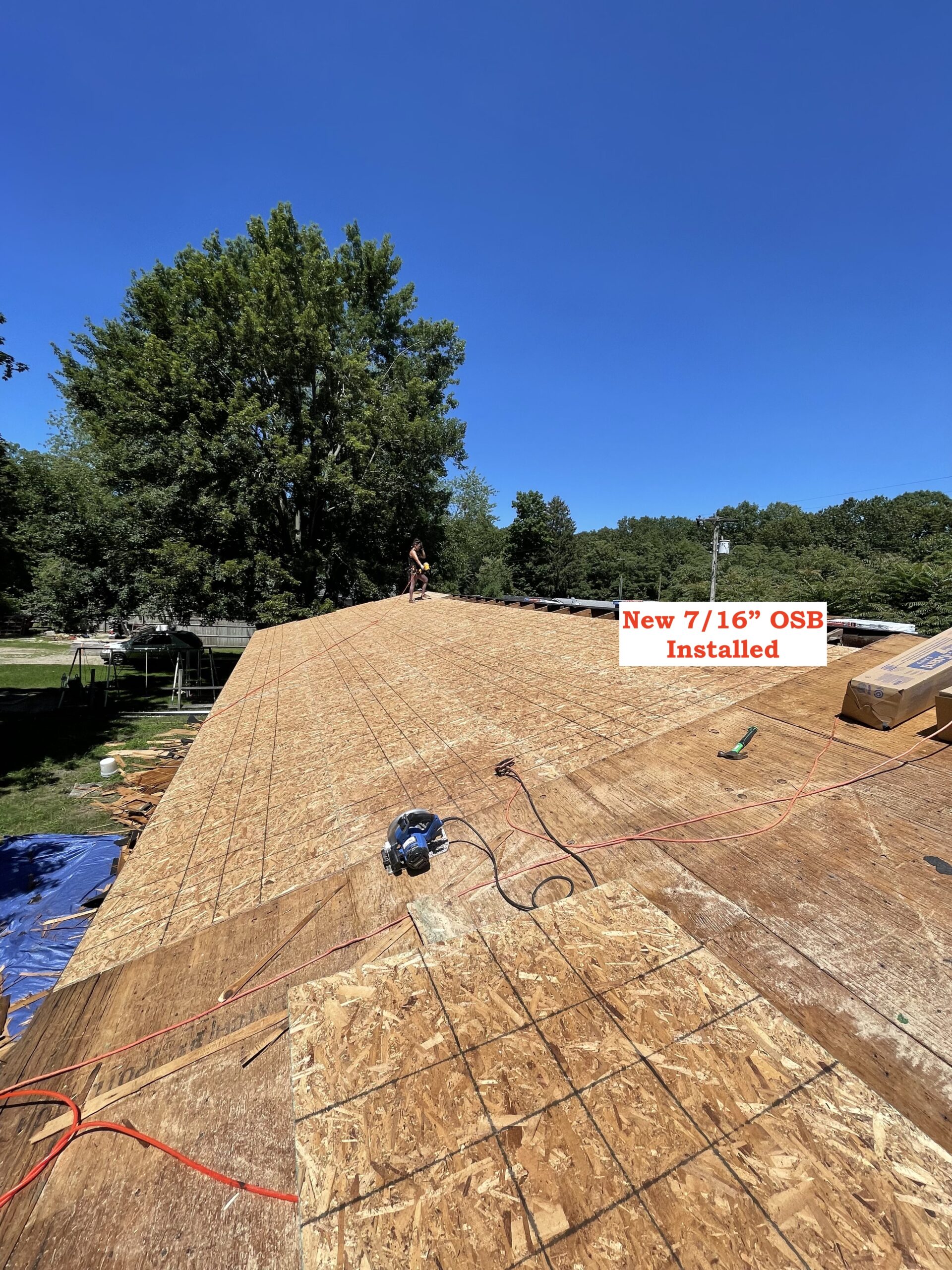
Inadequately Ventilated and Non-Ventilated Roof Decks
At Dennison Exterior Solutions & Gutter Toppers “all” of our roof projects include the repair of the attic for proper airflow and the installation proper attic ventilation to exceed code and manufacturer specifications. This important requirement is why all of our roof’s warranties automatically become 50 Year warranty’s. Our roofs last twice as long if not longer than our competitors’ roofs which over the long-term cuts your roofing costs by more than 50% not counting the lower utility savings by reducing energy consumption via your air conditioner and furnace. You simply no longer must worry about replacing the roof again in the national average of 17 to 19 years.
All roofing manufacturers require that the roof deck must be properly ventilated to validate a new shingles warranty. Sadly, most roofers fail to follow this requirement leaving the homeowner “without” any warranty at all.
GAF: GAF will NOT compensate you for: (a) Inadequate attic Ventilation.
Owens Corning: What is Not Covered: 6. Inadequate ventilation
Sherriff Goslin: Limitations of Coverage (what is not covered) (c.) Damage to the products caused by inadequate attic/roof sheathing ventilation.
TAMKO: Exclusions from Coverage: (1.) Shingles that have been: (b.) installed without adequate ventilation
CertainTeed: Any shingles applied to inadequately ventilated decks.
Inspection the Roof Deck
At Dennison Exterior Solutions & Gutter Topper we begin the tear-off process after our pre-construction meeting which included our installation manager, our foreman, his crew members, and the homeowner where we discuss/review the project in detail in order to ensure the project begins with everyone on the same page.
After the pre-construction meeting the crew chooses the best part of the roof to begin the removal of the shingles by placing breathable tarps on the ground to cover the landscaping in addition to leaning 4’ x 8’ OSB or our protective breathable tear-off tarp against the wall/gutters/fascia to protect those areas from the debris. Once we have removed all the roofing material from that area of the roof, we perform out inspection of the roof deck.
- We will inspect the condition of the rafters and sheathing in the space under the roof. If the rafters are sagging or if the sheathing is sagging between the rafters, the roofing must be removed, and the conditions repaired before new roofing is applied.
- We will check for evidence of leakage into the area under the roof, such as patches of dry rot or fungus, or the presence of carpenter ants. If signs of rotting or moisture are widespread, it is best to remove the roofing and repair any damage before re-roofing.
- We check to make sure the intake vent at or near the eave edges of the roof have at least 1 ½” to 2” gap between the top of the insulation and the underside of the roof deck to ensure proper airflow under the roof deck to validate the new shingles warranty. This step is critical as most roofing companies fail to install proper ventilation which means with the updated new roofing material that will be installed would deteriorate within a few years and leave the homeowner without any warranty at all (see the manufacturer’s warranty ventilation statements above).
- If needed at this point, we would also install insulation baffles to create the required airspace under the roof deck if the attic area is full of insulation such as a cathedral roof.
- Also, if needed we would also install our Heat Deflector Insulation in the attic if the homeowner has hired us to do so.
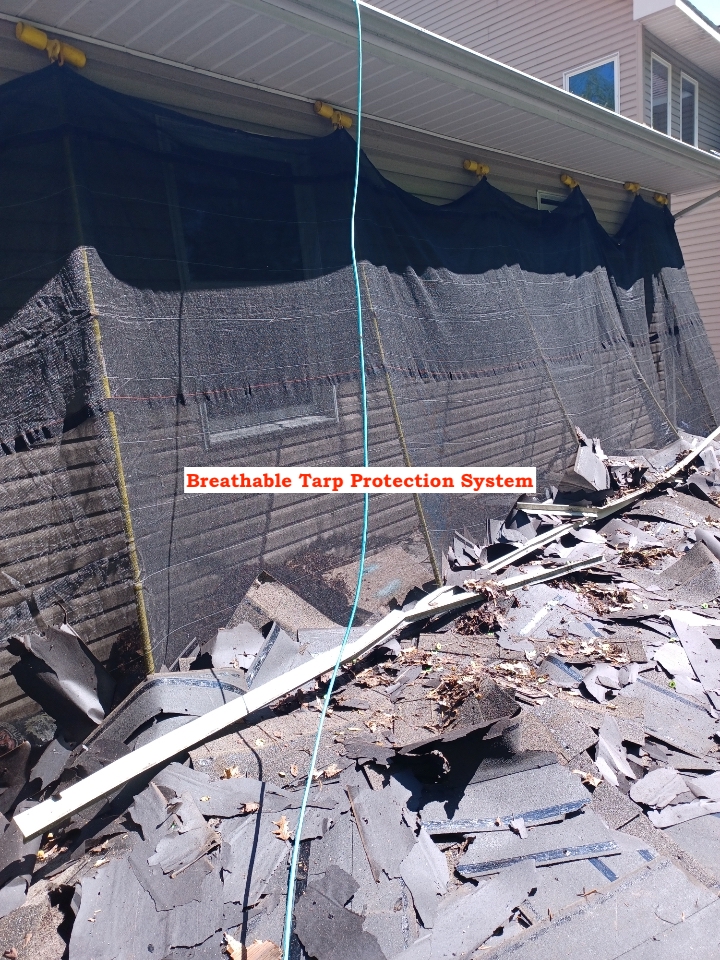
CLEANUP: When the sheathing is exposed and most of the debris is stowed in the dumpster or in a safe place ready to be hauled away, it’s time to clean up as follows:
- Use a blower or sweep the roof deck.
- Pull up or pound in all remaining nails.
- Clean out all gutters. Aluminum gutters might buckle under the load of debris.
- Rake the yard and the bushes and sweep the driveway.
- Use a rolling magnetic bar to pick up stray nails.
- Leave the attic plastic sheet in place to catch additional debris if removal or repair has not been completed.
